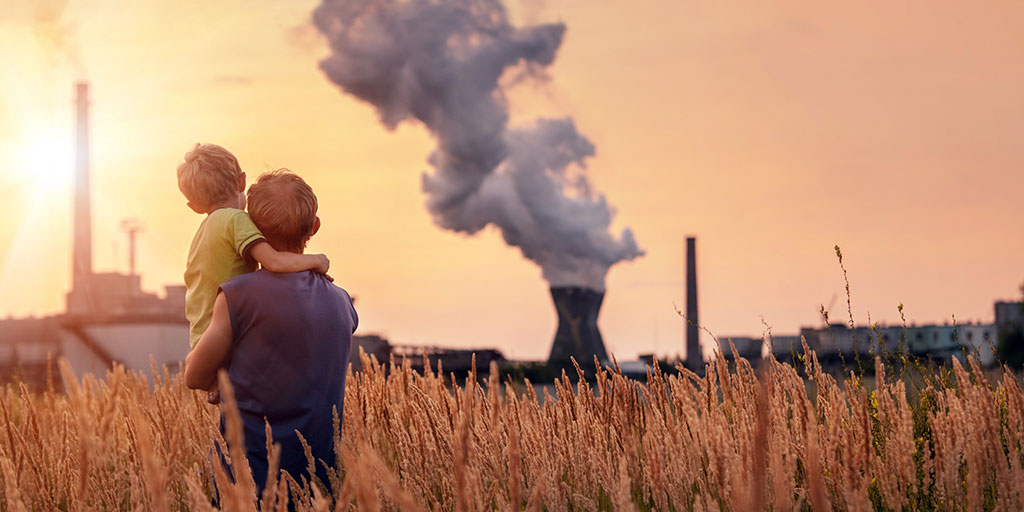According to a recent analysis released by the US-based research group Health Effects Institute, practically the entire African continent suffers some of the world’s most severe health consequences due to air pollution, with numerous nations facing some of the world’s highest levels of air pollution (HEI).
The new report, The State of Air Quality and Health Impacts in Africa, provides a comprehensive analysis of major air pollution sources and related health impacts in Africa’s 1.2 billion-person population. The report, released just before the United Nations’ upcoming COP27 Climate Change Conference in Egypt, discovered that air pollution is the continent’s second leading cause of death.
Africa has five of the top ten most polluted countries in the world in terms of outdoor fine particulate matter (PM2.5). In studies of long-term air pollution exposure, outdoor PM2.5 is the most consistent predictor of deaths from cardiovascular, respiratory, and other diseases. In 2019, air pollution was responsible for an estimated 1.1 million deaths in Africa, with 63% of those deaths being linked to exposure to household air pollution (HAP).
Impacts of Air Pollution on Children
Access to clean energy is not provided equitably throughout Africa, resulting in greater illness loads in some places. Every day, an estimated 75% of the population in East, West, Central, and Southern Africa cooks using solid fuels such as coal, wood, and charcoal, exposing them to high concentrations of dangerous pollutants at home.
Newborns and children under the age of five are particularly sensitive in these locations to home air pollution induced by the use of solid fuels for cooking. In 2019, air pollution was responsible for 14% of all fatalities among African children under the age of five.
The effects on newborns and infants have long-term health consequences, including issues with lung development and increased susceptibility to communicable diseases such as lower respiratory infections in young children.
Caradee Wright, the Chief Specialist Scientist with the South African Medical Research Council, said, “This report gives evidence of the substantial threat air pollution poses to the health, and even life, of babies and children under the age of 5 years. This vulnerable group needs special attention to mitigate their exposures, for example, through policy and intensive awareness campaigns with practical solutions for mothers and caregivers.”
Air Pollution Sources Across the Continent
Many of the same sources of PM2.5 found elsewhere in the world are present in Africa, including the use of solid fuels for cooking, the use of fossil fuels (coal, oil, and gas) for energy production, vehicles, industrial and semi-industrial activities such as artisanal mining, agriculture, forest fires, and open waste fire pits. Windblown dust, a natural source of air pollution, is also a major contributor to PM2.5 levels in some parts of Africa.
Air pollution sources and health consequences can vary greatly across the continent. Western Africa has the highest average concentration of PM2.5 pollution at 64.1 g/m3, while Southern Africa has the lowest at 26.5 g/m3. The use of fossil fuels contributes up to 41 per cent of total outdoor PM2.5 levels in Southern Africa, but only 11 per cent in Eastern Africa.
Targeted Actions are Beginning: More Needed
While air pollution levels are high, African countries are implementing a variety of programs to mitigate the effects of air pollution. So far, 17 African countries have implemented national air quality policies, with many including action on air pollution sources, particularly household air pollution, as part of their country’s Nationally Determined Contributions (NDCs). In 2019, Africa had one of the world’s lowest rates of energy access, with fewer than one in every 20 people in the Democratic Republic of the Congo, Ethiopia, Madagascar, Mozambique, Niger, Uganda, and Tanzania having access to clean cooking fuels.
At the same time, a scarcity of ground-level air quality monitoring stations means countries are not able to accurately track their progress towards meeting air quality objectives and standards.
Dr Patrick de Marie Katoto of the Catholic University of Bukavu, Democratic Republic of the Congo, said, “Air pollution greatly contributes to the rising frequency of chronic noncommunicable diseases in Africa, putting further strain on a health system already stretched by chronic infectious diseases and, more recently, COVID-19. These findings call for the African Union and member states to promote, plan, and fund air quality interventions to prevent unnecessary disabilities and deaths throughout the continent.”
Key Connections Between Air Pollution and Climate
When the world’s nations convene in Egypt next month for the COP27 climate negotiations, Africa will discuss how energy transitions might be planned to be efficient, economically practical, sustainable, and ecologically friendly. This complicated problem demands a sophisticated discussion of energy, climate, air quality, and health. African Union nations have also ratified “Agenda 2063,” a continent-wide programme that establishes a strategic framework for achieving the African Union’s aim of inclusive and sustainable development for all people by 2063. In the face of these issues, Africa will benefit from improved public health as well as fewer greenhouse gas emissions.
Also Read: Tuberculosis cases surged for the first time in many years: WHO





